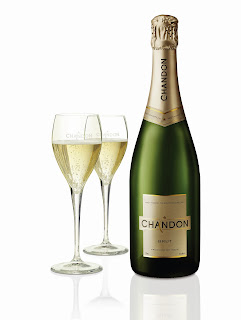This article first appeared in the Traveller section of the Delhi/NCR edition of Mail Today dated 31/10/2013. Unfortunately, there's no weblink to this article.
By Sourish Bhattacharyya
 |
| SeaDream Yacht Club's Indian corporate chef and president of the company's Indian operations, Sudesh Kishore |
THE docking of the luxury yacht SeaDream II in Mumbai this past Sunday opened a new chapter of sea travel from India. Unlike cruise ships, which are like little cities trawling the high seas and are fast becoming a popular vacation option, SeaDream "recreates the experience of travelling in a billionaire's yacht," explained the Miami-based company's vice-president for voyage planning, James Cabello.
The number of passengers on board is limited (112, compared with 3,000-4,000 on a standard cruise liner), service is personalised (you can even have your own Balinese dream bed on the top deck to make your honeymoon a little different), the dress code is informal (no tuxes, no gowns), the amenities are from Bulgari, and the gourmet menu designed by Sudesh Kishore, the company's Indian corporate chef who doubles as president of SeaDream Yacht Club's Indian operations, has scored a perfect 100 on the Conde Nast Traveler Gold List. Interestingly, the SeaDream kitchen team has four Indian chefs and they include the pastry chef.
The two SeaDream mega yachts, in operation since 2001, are owned by self-made Norwegian entrepreneur and former Cunard Line chairman Atle Brynestad.
On its inaugural Asian journey, SeaDream II travelled from Athens to Mumbai, from where it headed to Goa, Kochi, Colombo, Port Blair, Phuket, Langkawi and finally to Singapore, where the mega yacht will drop anchor on November 9. At Singapore, the vessel will be rested for four weeks and undergo a $4 million refurbishment that will see all its woodwork and linen being replaced for the next voyage to Perth and Melbourne.
As Cabello took us on a guided tour around the glittering staterooms of the 105m yacht anchored off the Indira Docks at the Mumbai Port Trust, I couldn't help but notice the blue-blooded red wines--the Super Tuscans Solaia and Tignanello and the Bordeaux First Growth, Chateau Mouton Rothschild--that welcome guests on board as they walk into the stately yet intimate dining room. With the price being all-inclusive (on board the yacht, you have to pay only for the spa treatments, the casino and purchases made from the duty-free shop), I calculated that a couple travelling on SeaDream can actually recover most of their investment by merrily consuming these reds or helping themselves liberally at the 'champagne and caviar splash' that is organised at every port.
The ingredients for the elaborate menu, which fuses American, European and Asian elements, are brought fresh off the ports and the menu changes according to what's in season--at the Indira Docks, we had salmon, chunky shrimps and langoustines that had travelled with the yacht from Holland. And the fitness activities on board--from tai chi classes to the golf simulator--will help you shed the excess flab that you're likely to add because of the constant presence of good food.
Gitanjali Balani, Director, InRhythm, and SeaDream's India representative, said the cost of a six-day journey works out to Rs 6 lakh for a couple, but the Indian clientele is opting for longer voyages. A Mumbai couple have chosen to celebrate their silver wedding jubilee by taking one of SeaDream's cruises on the Amazon. A Hyderabad real estate developer has invited Balani to help him and his close friends plan a holiday together on a SeaDream yacht.
"When my potential clients, who are all high net-worth individuals (HNIs), hear about the all-inclusive fare, they can't believe there are no hidden costs," Balani said. She pointed to an interesting aspect of the price structure. If you book early for a SeaDream cruise, as in the case of an airline, you can actually get a special price (as opposed to the brochure price), which can be 45-55 per cent cheaper. Will these temptations be enough for the idea of bespoke yachting holidays to catch on? Balani is confident that the market is ripe for this new brand of sea travel.













